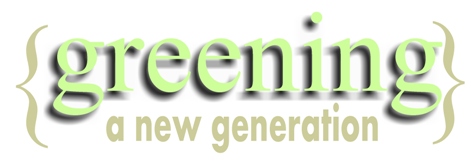When you consider the thousands of chemicals that we involuntarily breathe in daily, immerse our bodies in, slather on our skin, or 'freshen' a room up with, it is only natural to want to keep as many chemicals out of baby's room and body as possible.
According to a study by the EWG*, an average of 200 chemicals, including pollutants and pesticides, are present in the cord blood of a baby's umbilical cord at birth. Unfortunately, this is only the beginning. Like it or not, chemicals are found in products, food, and even the air we breathe. After testing the chemicals found in baby's cord blood, the EWG study showed that the majority of them were carcinogenic (cancer causing), toxic to the brain and nervous system, cause birth defects or abnorbal development.
The difference between a baby and an adult being surrounded by all these chemicals is that a baby's system is not fully developed, nor can their body process and eliminate these toxins. The skin is the body's largest organ and has the potential to absorb many chemicals. They head right into the bloodstream when a cream or bubble bath laced with chemicals (fragrance, parabens, sodium lauryl/laureth sulfate) is slathered on or soaked in, particularly on a daily basis.
Aside from chemical-laced personal care products, are household cleaners. Many 'air fresheners' are bottles of chemicals. Even the ones that bear a 'Lavender fragrance' on the label are made up of thousands of chemicals that eventually resemble a Lavender smell.
We can reduce the amount of chemicals and toxins from our family's lives by buying organic and natural, reading labels, educating ourselves on ingredients and their origins, and going back to the basics when it comes to household cleaners and personal care.
'Going back to basics' refers to using the ingredients that the earth gave us. One of the most
common and effective odor eliminator is Sodium Bicarbonate, or Baking Soda. This mineral compound has been used since ancient times as a cleanser and natural deodorant. As it is edible, it works well as a cleaning agent for the teeth and mouth, and works at the other end of the spectrum as a bathtub cleaner.
Baking Soda is most commonly used to neutralize odors. Most boxes of Baking Soda live in refridgerators and freezers, used to absorb food odors.
Being so effective in freshening a space, imagine the effect Baking Soda has on eliminating the smell of a diaper pail in baby's room!
To create an effective, 100% natural diaper pail/room deodorizer, combine in a stainless or glass bowl:
In a separate glass measuring cup, combine:
- 10 drops pure Tea Tree essential oil (acts as an antibacterial agent)
- up to 1/4 cup water
Slowly pour the water/Tea Tree mixture into the baking soda and stir until you create a thick paste. Be careful not to add too much water or the soda will begin fizzing and dissolve.
Pat the thick paste into approximately 6 muffin tins lined with paper cups and let sit for up to 24 hrs, or until completely solid. Remove from muffin tin and wrap or store the 'pucks' in a cookie tin, away from moisture, until ready to use.
These pucks work well at the bottom of a dry diaper pail that contains a bag, behind a toilet, under a sink, or anywhere that needs some natural freshening.
Creating your own room freshener is a responsible way to eliminate odors in baby's room, without having to introduce more chemicals in the house.
copyright
Jen Casey, 2009
*EWG Report, Body Burden 2: The Pollution in Newborns




 The natural choice...
The natural choice...